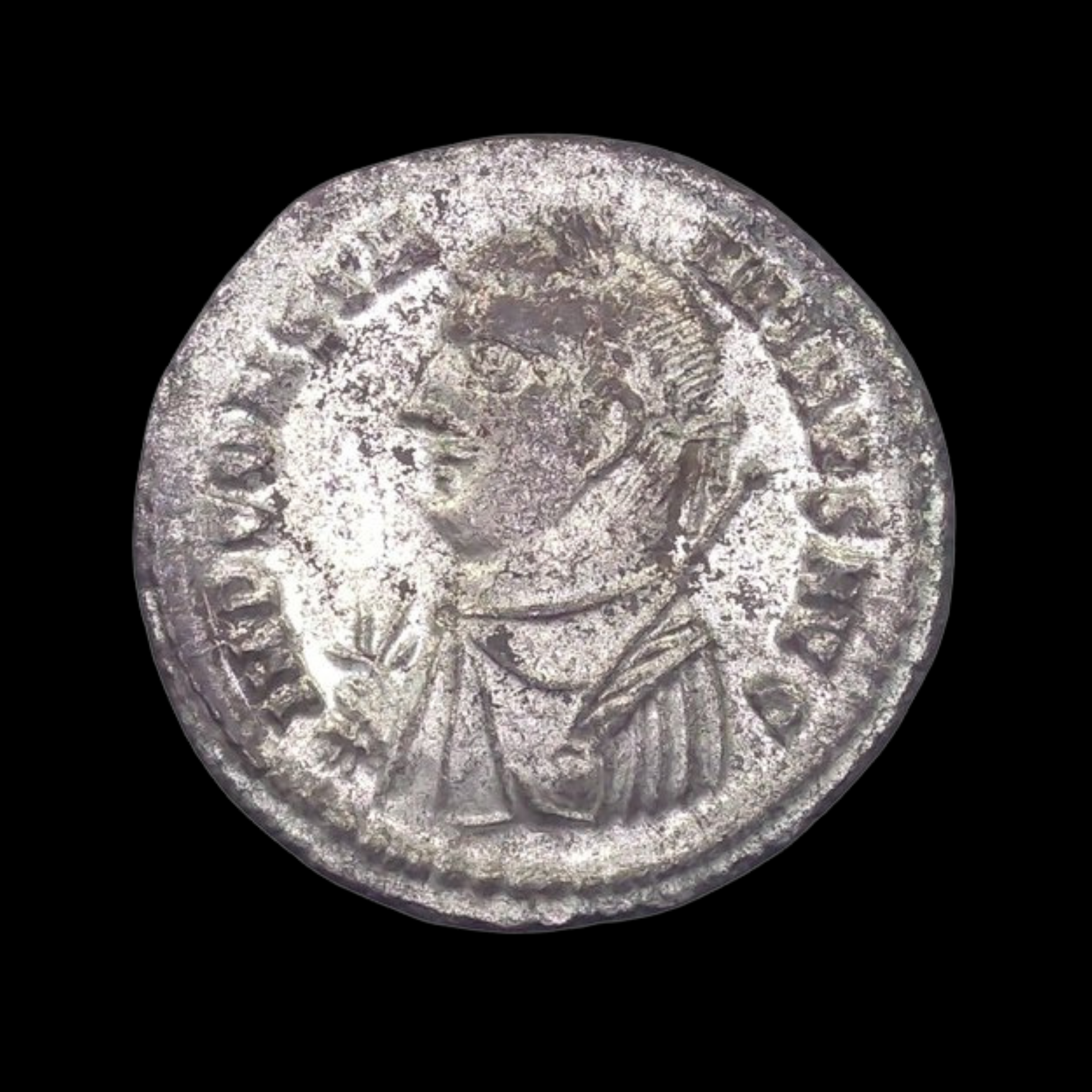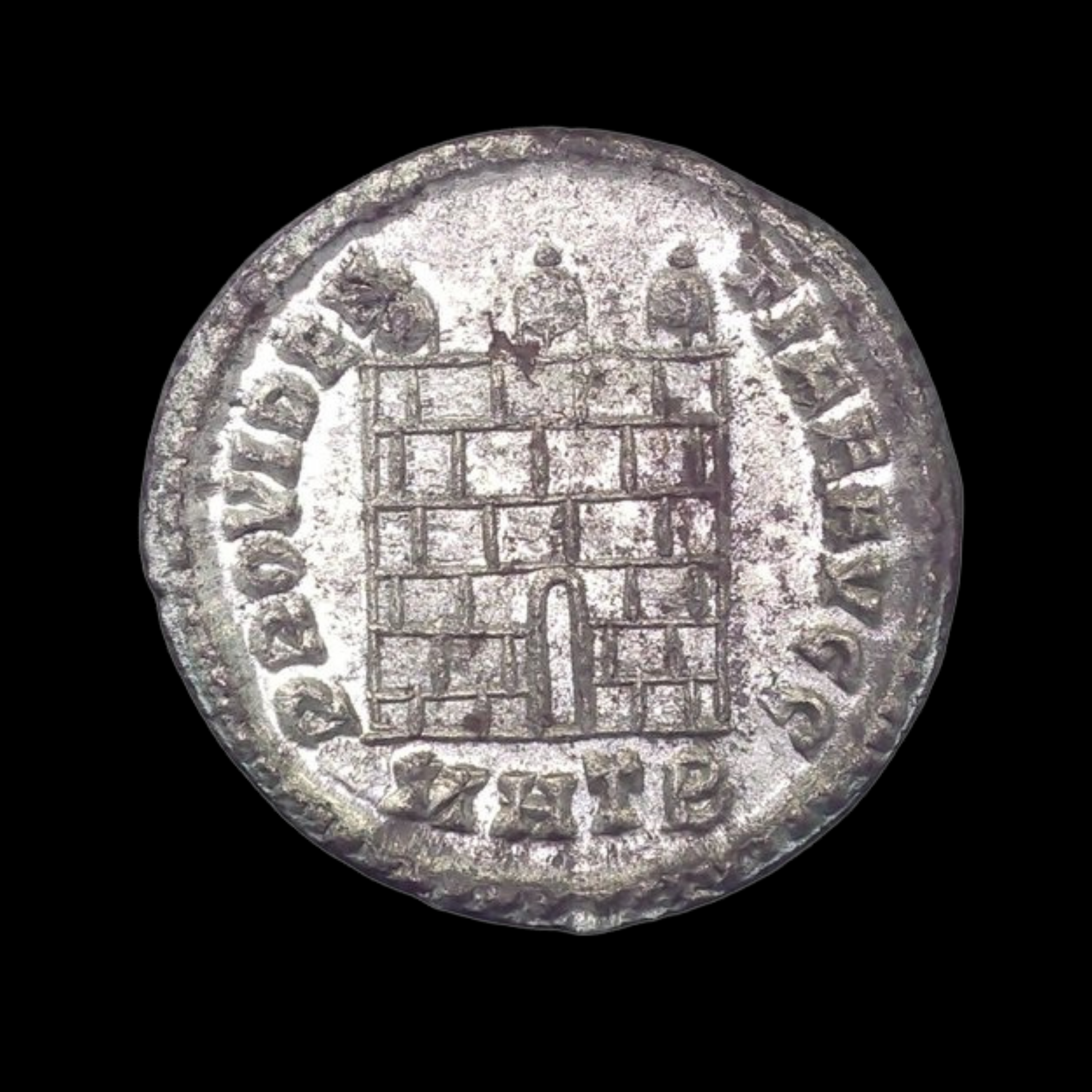 Image 1 of 6
Image 1 of 6

 Image 2 of 6
Image 2 of 6

 Image 3 of 6
Image 3 of 6

 Image 4 of 6
Image 4 of 6

 Image 5 of 6
Image 5 of 6

 Image 6 of 6
Image 6 of 6







Roman Bronze AE4 of Valentinian II (about 1,633-1,650 years ago)
This small bronze coin (AE4) was issued during the reign of Emperor Valentinian II, who ruled portions of the Western Roman Empire from 375 to 392 CE. Having ascended to the throne at just four years old following his father Valentinian I's death, this young emperor's coinage represents a period of continued dynastic legitimacy despite his limited actual authority.
Coin Description:
Front side: Portrait of the young Emperor Valentinian II facing right, wearing a pearl diadem and imperial robes, with his name and titles in Latin around the edge.
Back side: Likely features standard late Roman imagery such as Victory advancing, the emperor with standards, or religious/military symbolism common to the late 4th century.
Technical Details:
Bronze alloy composition
Denomination: AE4 (smallest standard bronze coin in the late Roman monetary system)
Weight: Approximately 1-2 grams
Diameter: Approximately 13-17 mm
NGC Certified for authentication and preservation
Minted between 375-392 CE
Condition as specified by NGC certification
Historical Significance: Valentinian II's seventeen-year reign illustrates the increasingly complex nature of late Roman imperial politics. Despite his imperial title, he never exercised genuine political power. Most western territories were controlled by the usurper Magnus Maximus, while in Italy his mother Justina served as the effective ruler. Religious controversies marked his reign as his mother favored Arian Christianity while Bishop Ambrose of Milan championed Nicene orthodoxy. After his mother's death, Valentinian II adopted Nicene Christianity but died before receiving baptism, prompting Saint Ambrose's theological development of "baptism of desire" in his funeral oration. His death at age 21, reportedly by strangulation orchestrated by his Frankish general Arbogast, highlights the vulnerability of imperial authority during a period when military commanders increasingly determined political succession.
This small bronze coin (AE4) was issued during the reign of Emperor Valentinian II, who ruled portions of the Western Roman Empire from 375 to 392 CE. Having ascended to the throne at just four years old following his father Valentinian I's death, this young emperor's coinage represents a period of continued dynastic legitimacy despite his limited actual authority.
Coin Description:
Front side: Portrait of the young Emperor Valentinian II facing right, wearing a pearl diadem and imperial robes, with his name and titles in Latin around the edge.
Back side: Likely features standard late Roman imagery such as Victory advancing, the emperor with standards, or religious/military symbolism common to the late 4th century.
Technical Details:
Bronze alloy composition
Denomination: AE4 (smallest standard bronze coin in the late Roman monetary system)
Weight: Approximately 1-2 grams
Diameter: Approximately 13-17 mm
NGC Certified for authentication and preservation
Minted between 375-392 CE
Condition as specified by NGC certification
Historical Significance: Valentinian II's seventeen-year reign illustrates the increasingly complex nature of late Roman imperial politics. Despite his imperial title, he never exercised genuine political power. Most western territories were controlled by the usurper Magnus Maximus, while in Italy his mother Justina served as the effective ruler. Religious controversies marked his reign as his mother favored Arian Christianity while Bishop Ambrose of Milan championed Nicene orthodoxy. After his mother's death, Valentinian II adopted Nicene Christianity but died before receiving baptism, prompting Saint Ambrose's theological development of "baptism of desire" in his funeral oration. His death at age 21, reportedly by strangulation orchestrated by his Frankish general Arbogast, highlights the vulnerability of imperial authority during a period when military commanders increasingly determined political succession.
This small bronze coin (AE4) was issued during the reign of Emperor Valentinian II, who ruled portions of the Western Roman Empire from 375 to 392 CE. Having ascended to the throne at just four years old following his father Valentinian I's death, this young emperor's coinage represents a period of continued dynastic legitimacy despite his limited actual authority.
Coin Description:
Front side: Portrait of the young Emperor Valentinian II facing right, wearing a pearl diadem and imperial robes, with his name and titles in Latin around the edge.
Back side: Likely features standard late Roman imagery such as Victory advancing, the emperor with standards, or religious/military symbolism common to the late 4th century.
Technical Details:
Bronze alloy composition
Denomination: AE4 (smallest standard bronze coin in the late Roman monetary system)
Weight: Approximately 1-2 grams
Diameter: Approximately 13-17 mm
NGC Certified for authentication and preservation
Minted between 375-392 CE
Condition as specified by NGC certification
Historical Significance: Valentinian II's seventeen-year reign illustrates the increasingly complex nature of late Roman imperial politics. Despite his imperial title, he never exercised genuine political power. Most western territories were controlled by the usurper Magnus Maximus, while in Italy his mother Justina served as the effective ruler. Religious controversies marked his reign as his mother favored Arian Christianity while Bishop Ambrose of Milan championed Nicene orthodoxy. After his mother's death, Valentinian II adopted Nicene Christianity but died before receiving baptism, prompting Saint Ambrose's theological development of "baptism of desire" in his funeral oration. His death at age 21, reportedly by strangulation orchestrated by his Frankish general Arbogast, highlights the vulnerability of imperial authority during a period when military commanders increasingly determined political succession.
Valentinian II (Latin: Valentinianus; 371 – 15 May 392) was a Roman emperor in the western part of the Roman empire between AD 375 and 392. He was at first junior co-ruler of his half-brother, then was sidelined by a usurper, and finally became sole ruler after 388, albeit with limited de facto powers.
A son of emperor Valentinian I and empress Justina, he was raised to the imperial office at the age of 4 by military commanders upon his father's death. Until 383, Valentinian II remained a junior partner to his older half-brother Gratian in ruling the Western empire, while the East was governed by his uncle Valens until 378 and Theodosius I from 379. When Gratian was killed by the usurper emperor Magnus Maximus in 383, the court of Valentinian in Milan became the center of Italy where several religious debates took place. In 387, Maximus invaded Italy, spurring Valentinian and his family to escape to Thessalonica where they successfully sought Theodosius' aid. Theodosius defeated Maximus in battle and re-installed Valentinian in the West, under the supervision of the general Arbogast. In 392, after repeated conflicts with Arbogast, Valentinian was discovered hanged in his room under unknown circumstances.













